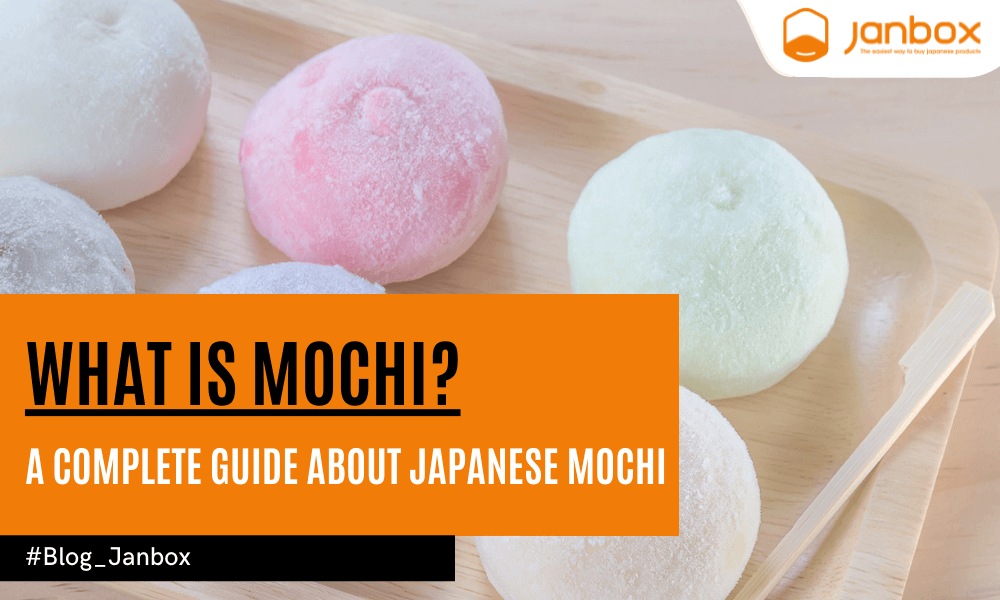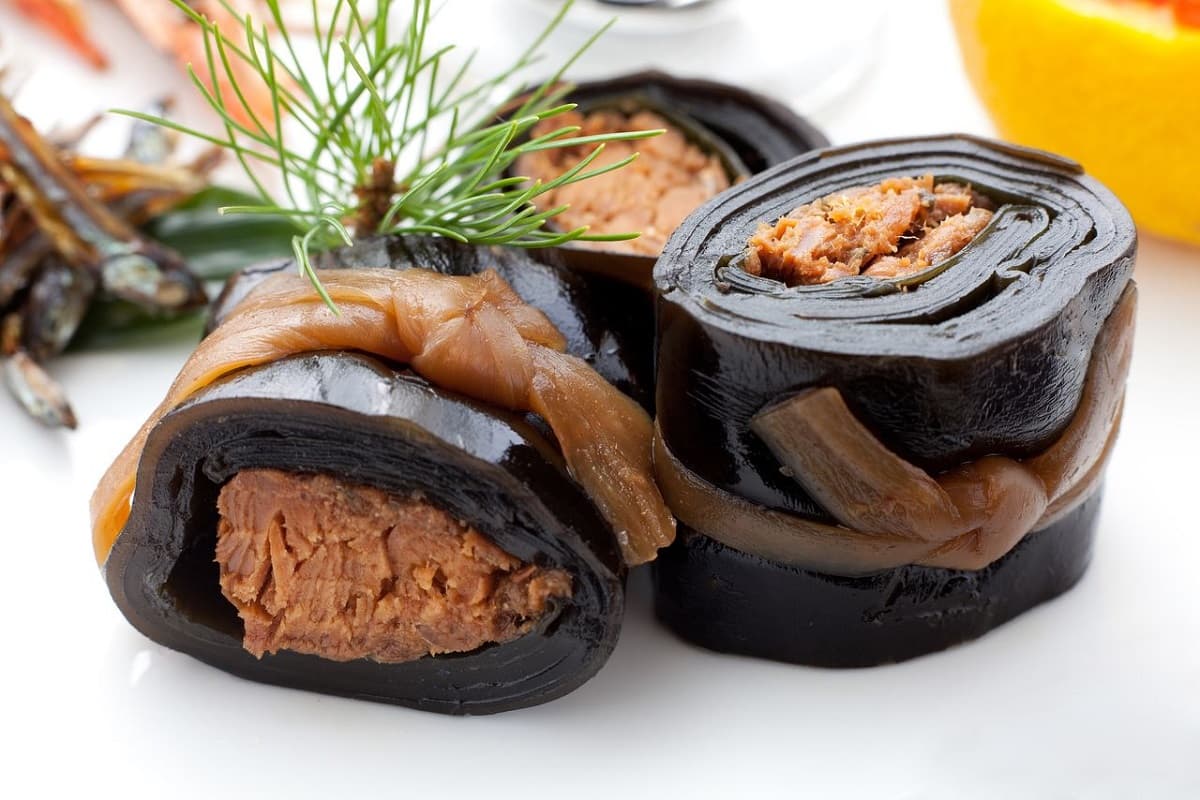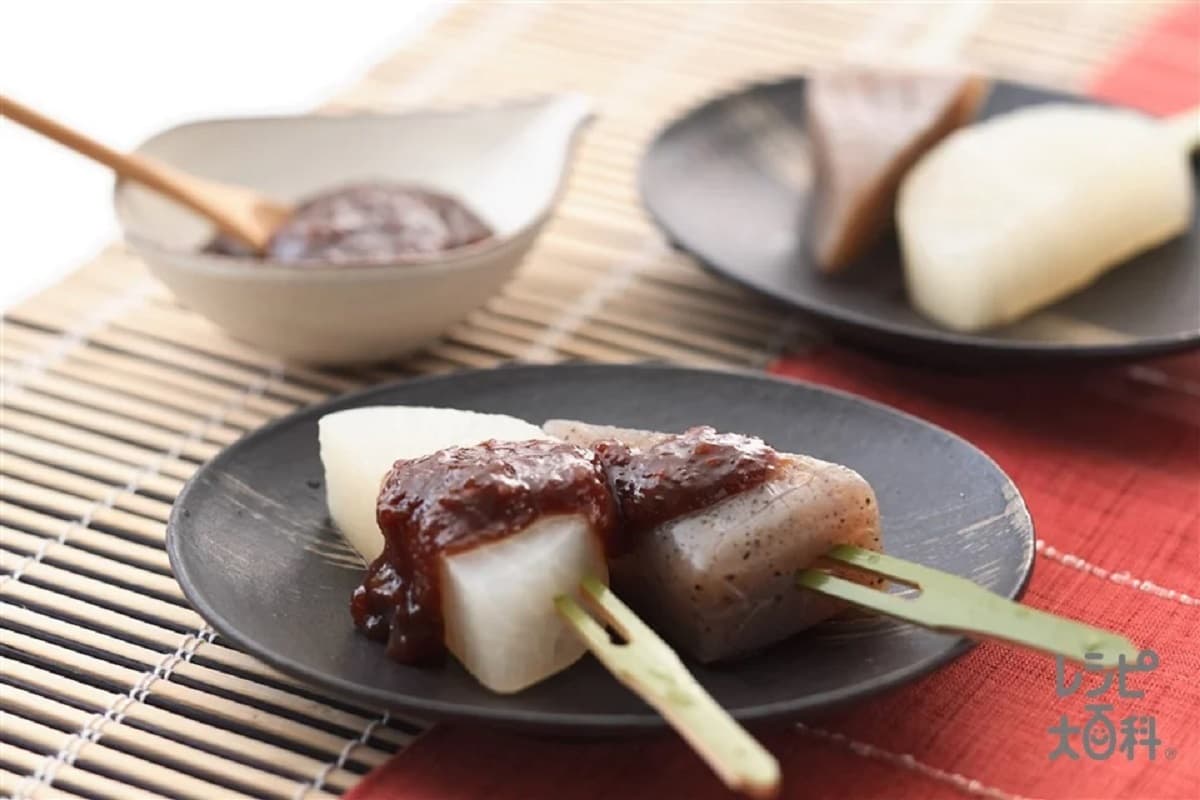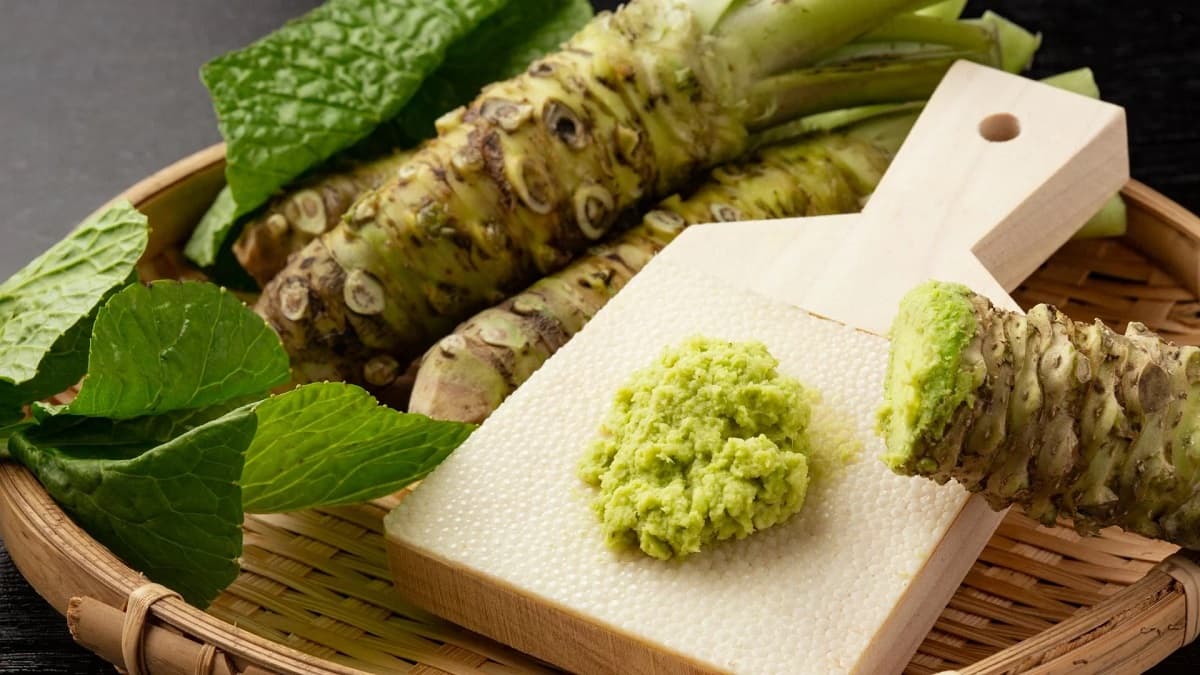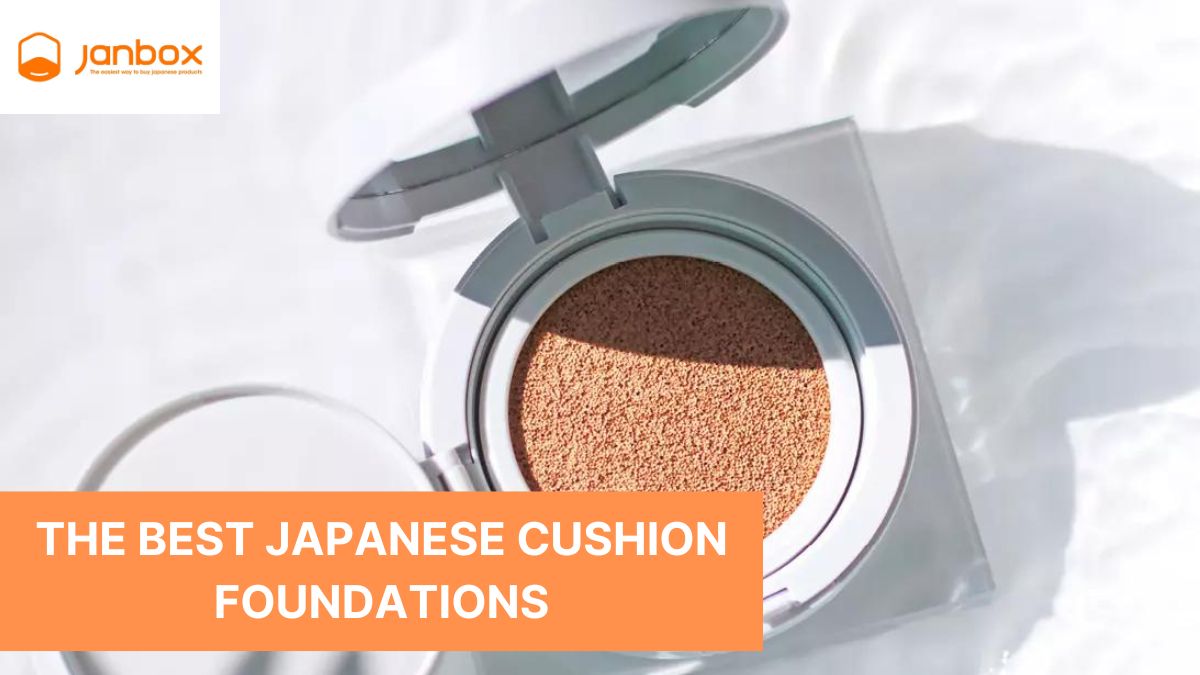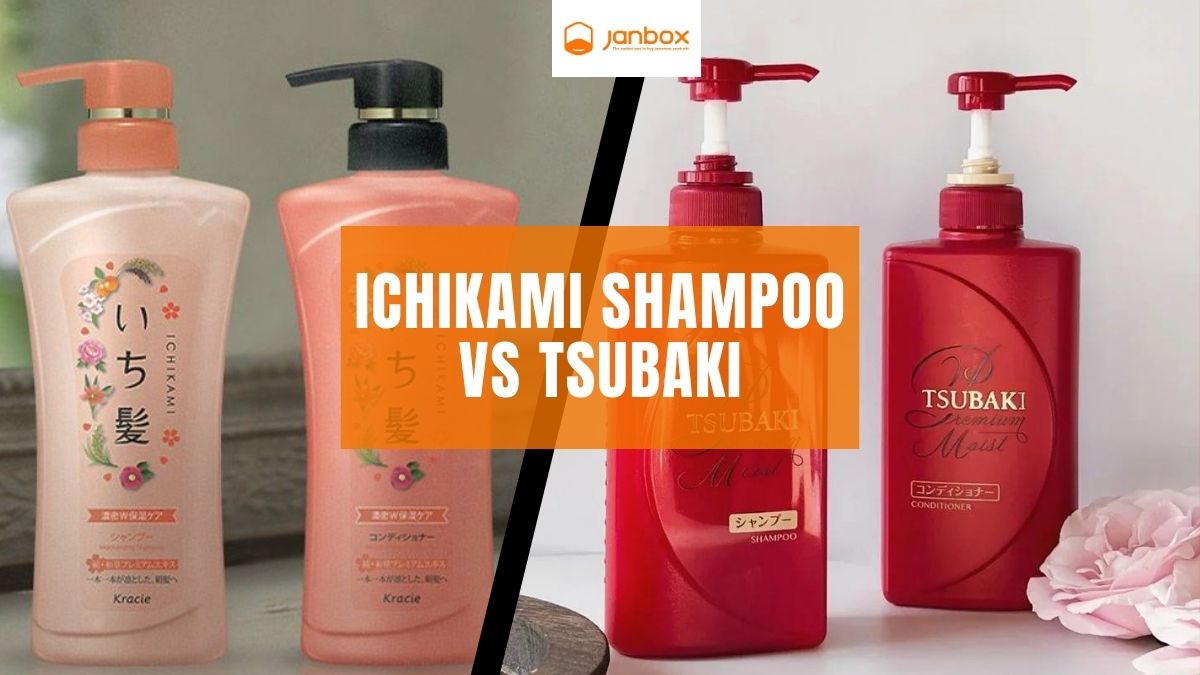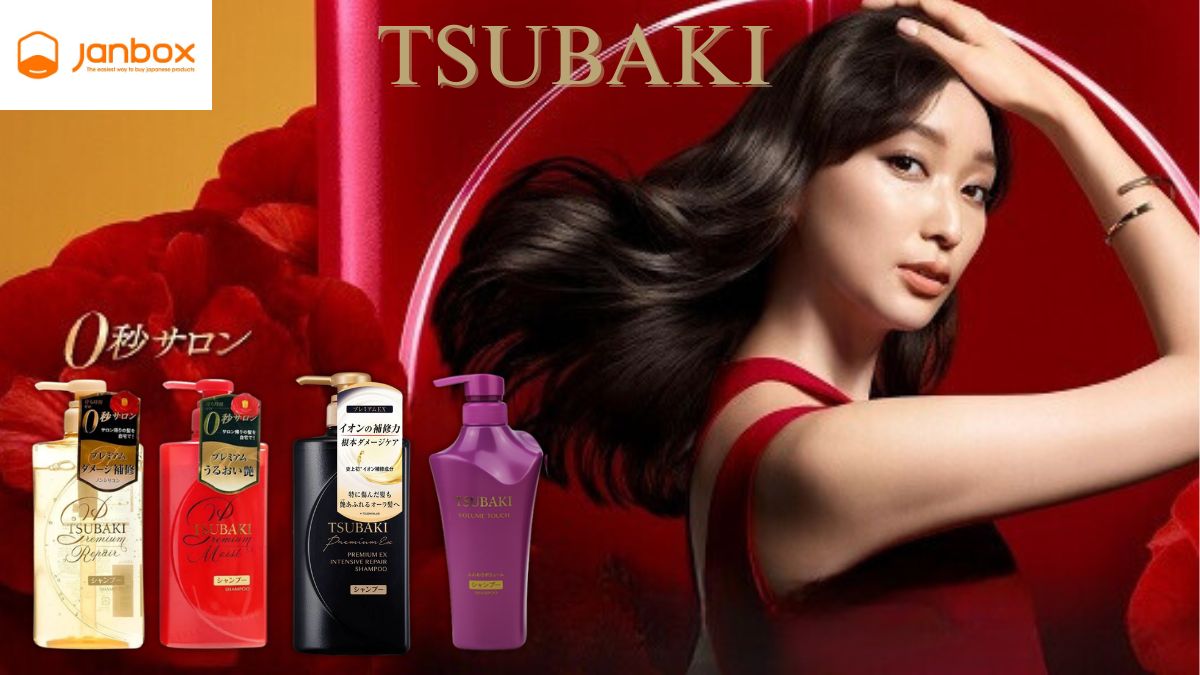Have you ever wondered about Mochi, a classic Japanese rice cake delicacy, if you are a fan of Japanese cuisine? What is Mochi, and what is its purpose? What are the different types of mochi? Where can you buy Mochi? Mochi is a popular Japanese cake that is adored all over the world for its delectable taste, unusual form, and intricate preparation.
Botamochi, Daifuku, Kusa Mochi, Cream Mochi, Sakura Mochi, and Hanabira Mochi are just a few of the more than ten varieties of Mochi available in supermarkets and confectionery stores.
Mochi has grown in popularity across the world over time, and its flavor has improved as a result of more creativity. But that isn’t enough to properly comprehend Mochi. Let’s Janbox explore more information on this unique and tasty Japanese dessert!
1. What is Mochi?
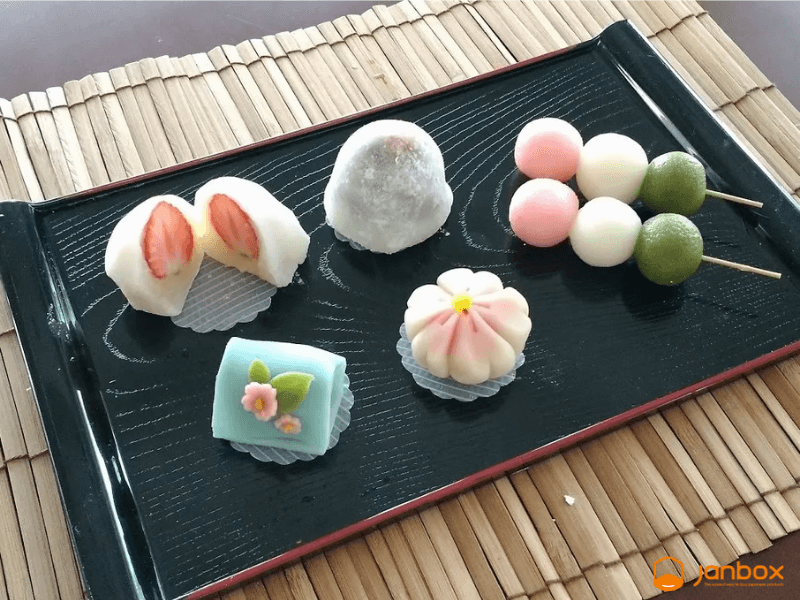
Mochi is a delicious Japanese rice cake composed of a short-grain japonica glutinous rice (mochigome) and generally filled with red beans. Sometimes other ingredients, for example, water, sugar, and cornstarch are mixed to mochigome creating cute Mochi. The rice is pounded into paste and molded into the desired shape.
This is a common dish in Japan. Mochi is now available in a variety of forms and tastes, but it continues to leave a lasting impression on those who consume it. Because of this, mochi is well-known and well-liked across the world.
When Mochi use?
- On New Year’s Day, mochi is the most popular cake in Japan.
- On December 28, the Japanese commonly employ Kagami Mochi in a ritual known as Kagami Biraki, in which Mochi is placed on the family altar. On the other hand, Mochi is a special meal for other holidays, such as Children’s Day and Girls’ Day.
- Every year on May 5, Japan commemorates Children’s Day with the goal of promoting children’s happiness and rights. Kashiwa mochi and chimaki (a variation of dango wrapped in bamboo leaves) are the two primary varieties of cakes served on this day. Hishi mochi is a delectable Japanese delicacy served as part of a Girls’ Day tradition.
2. 15 types of Japanese mochi
Mochi cake is more than just a form of filling. There are many various sorts of fillings based on the demands of the consumers and each region of Japan, and even the manner to eat this cake is as distinctive as other cakes. As a result, consumers are always drawn to it. Lét’s find out together. What are Mochi’s types?
2.1. Botamochi (Ohagi)
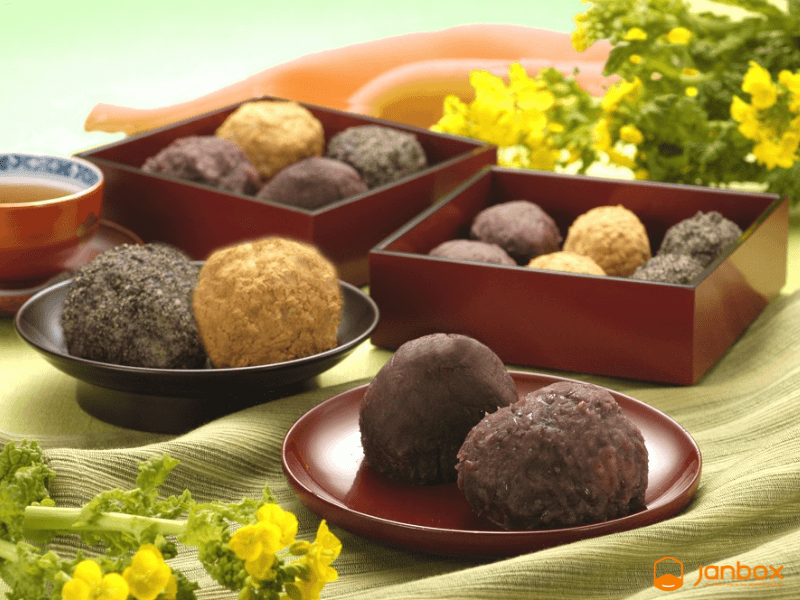
Bota Mochi, also known as Ohagi, has a sweet red bean paste on the outside. This red bean paste will be pounded with glutinous rice. This kind of cake is traditionally served during the Ohigan Buddhist holiday to honor ancestors.
2.2. Daifuku
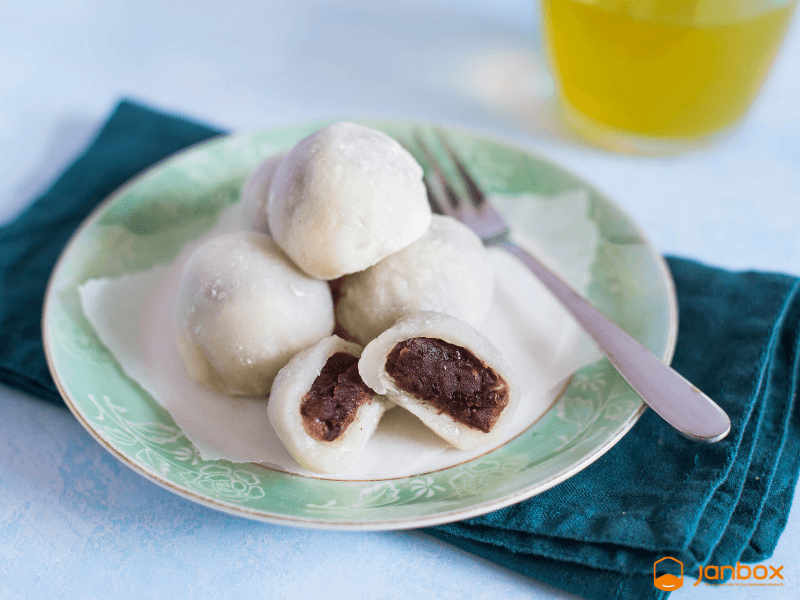
This is a big, spherical, soft mochi that comes in a variety of hues, including pale green, pink, and white. Cornstarch or rice are commonly used to make the outer shell. It is generally filled with sweet red bean paste (Anko), besides, there are a variety of fillings available, including strawberry (Ichigo), chestnut, sweet sesame, fruit, and so on. Daifuku means “great luck” in Japanese, therefore it is a must-have meal for the New Year or big festivals.
2.3. Dango
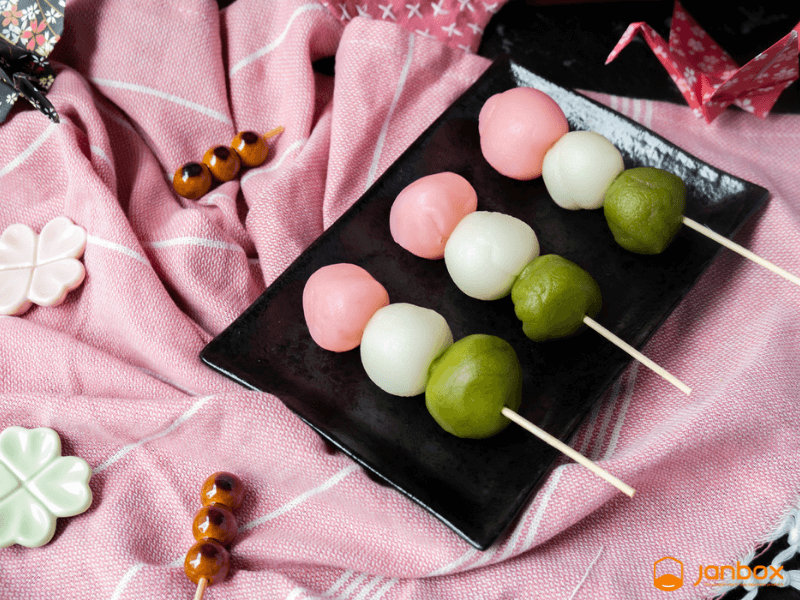
Although Dango is not technically a kind of Mochi, many people perceive it to be one since it is created from a rice flour combination and has a soft, chewy feel similar to Mochi. Mitarashi, a sweet soy sauce, is used to coat the Dango balls. One Dango stick is usually made up of 3 to 5 balls in a variety of colors, such as white, pink, and blue.
These colors have been selected to commemorate the Hanami color. During the Mid-Autumn Festival, Dango cakes are also served.
2.4. Hanabira Mochi
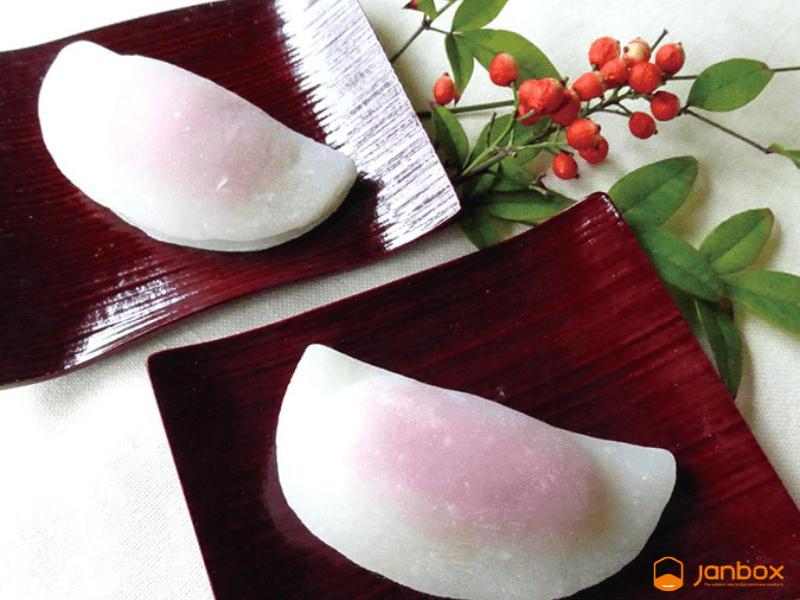
This Mochi cake’s name also refers to its form, which is that of a petal. Mung bean paste, red mocha, or Anko red bean jam are inside the white or pink outer layer. This sort of cake is commonly served during tea rituals in Japan during the first days of the new year.
>> See more: What is Obon? A Complete Guide The Obon Festival in Japan
2.5. Hishi Mochi
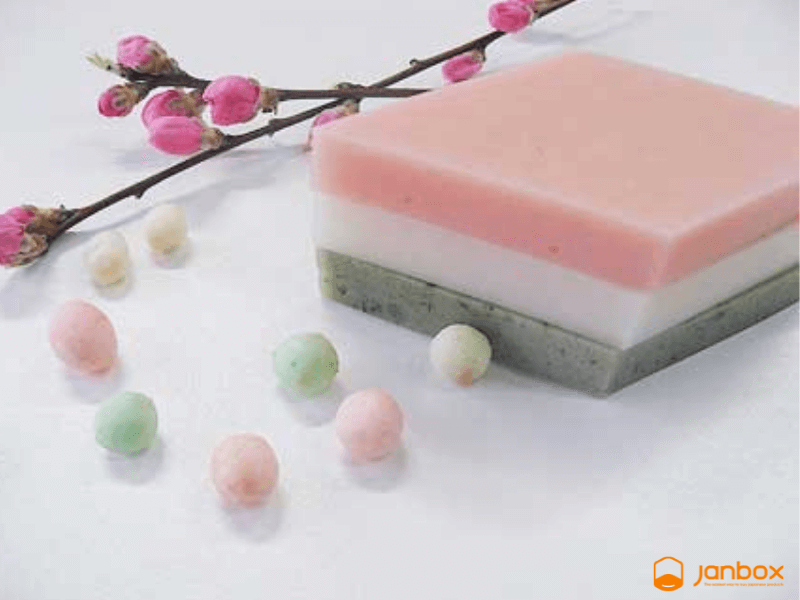
Hishi Mochi is shaped like a diamond and is made up of three layers: pink, white and blue. The pink layer of cake denotes good health, while the blue hue denotes a successful life and the white color denotes longevity. HishiMochi is a must-have meal at Japan’s annual doll festival, which takes place on March 3 every year.
2.6. Kagami Mochi
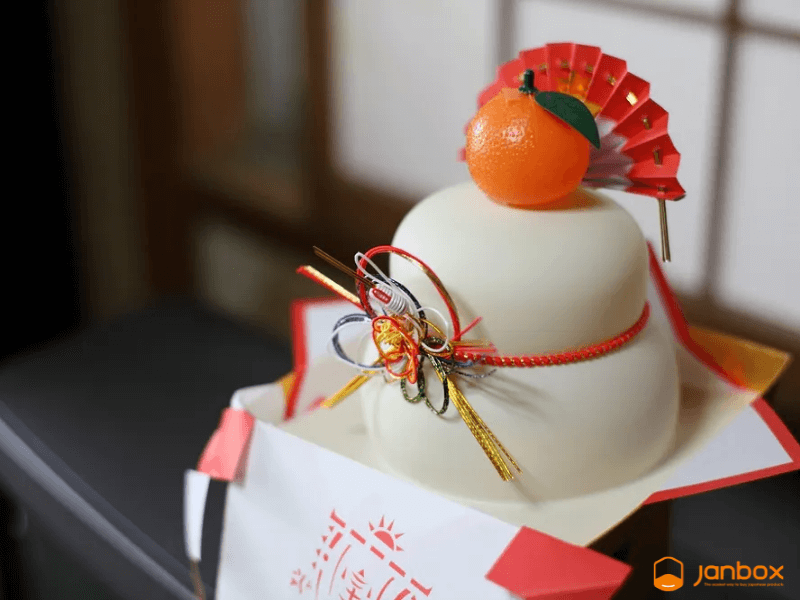
Kagami Mochi is a traditional Japanese New Year’s decoration (Shogatsu). It’s made up of two spherical mochi pieces piled on top of each other with a daidai, or bitter orange, fruit on top. The decorating can be elegant or basic, depending on your tastes.
This cake is often used to adorn temples, houses, and offices in Japan. Mochi is also created with the desire for a happy and prosperous new year. This cake is also served on Christmas to hope for a lucky year-end.
>> See more: Top 20 best Japanese candy you must try now
2.7. Kinako Mochi
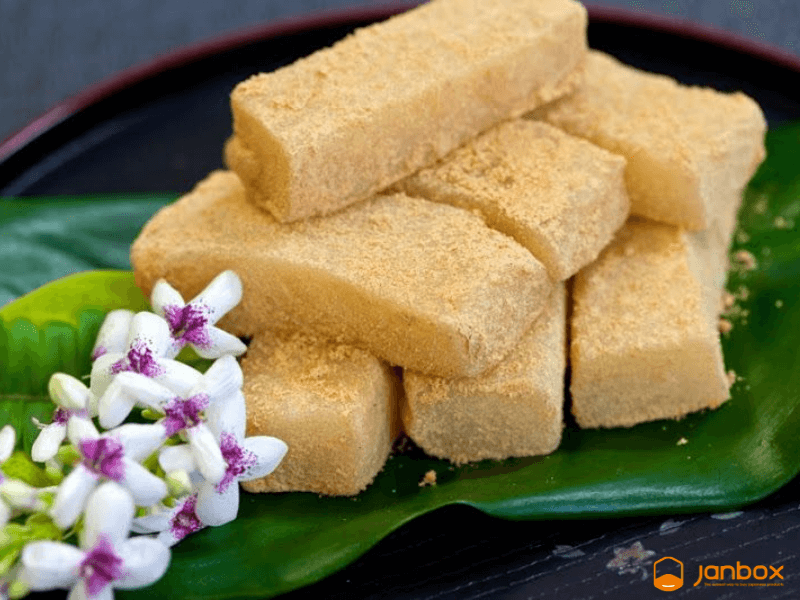
Kinako mochi is an oven-baked mochi dessert that is dusted with sugar and baked soybean powder before being eaten. This sort of mochi tastes best when it is still warm from the oven. This is a daily meal that feeds the body with protein and iron.
2.8. Kiri Mochi
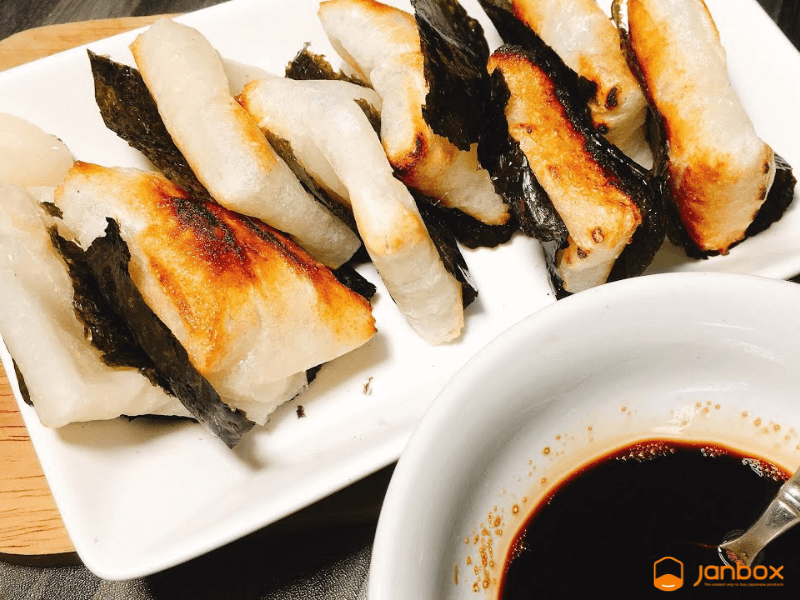
In Japanese supermarkets, Kiri Mochi is highly popular. Because it is a sort of unsweetened, dried mochi, it has a somewhat hard and dry rectangular shape. As a result, you must soften it before using it by baking it or heating it in the microwave. Kiri Mochi is enjoyed by many people all year, not just during the first holidays of the year, because of its extended shelf life and vacuum packaging.
2.9. Kusa Mochi
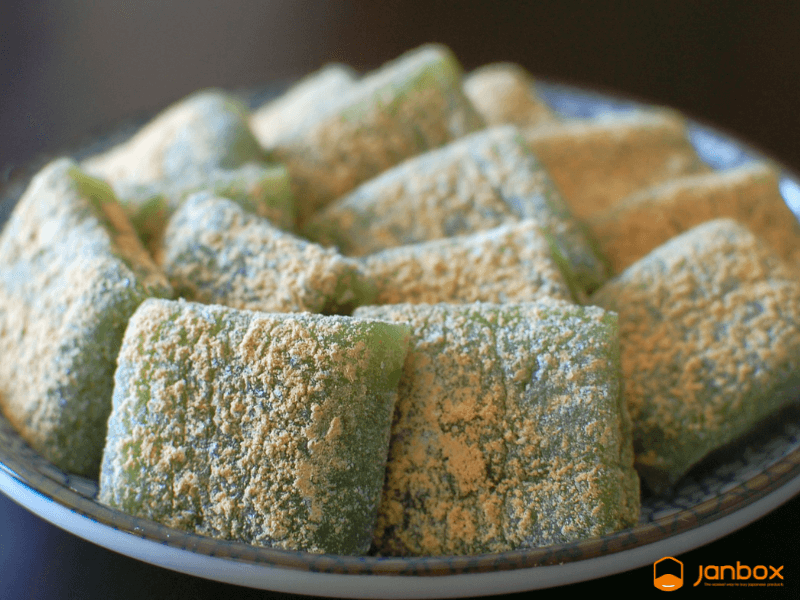
Kusa Mochi, also known as Green Grass Mochi because of its distinctive green hue and wormwood aroma, is a popular delicacy served during holidays and Tet. This mochi delicacy with Anko red bean paste within and the scent of the leaves is commonly offered in the spring.
2.10. Mizu Shingen Mochi (Raindrop Cake)
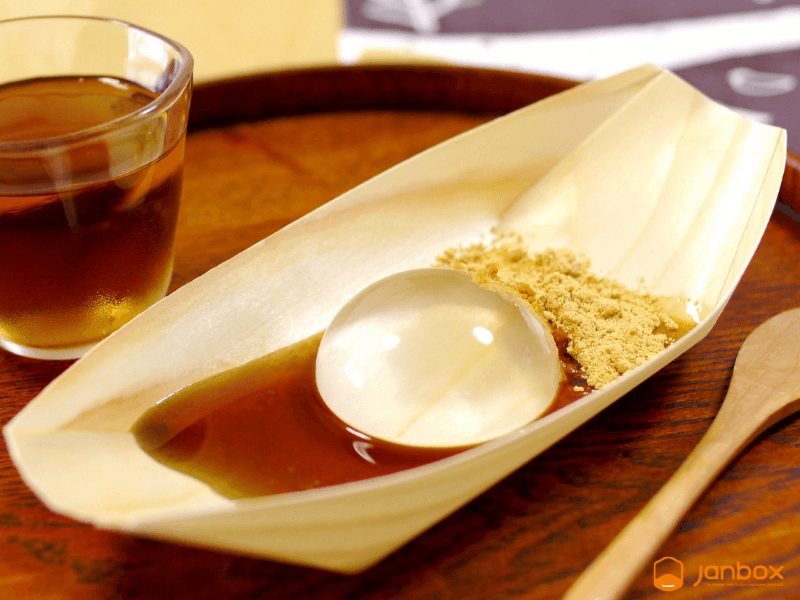
The form of the cake is hinted at in the name. This modern-style Japanese dessert is shaped like a fairly fresh raindrop. It is created with agar-agar powder and generally flavored with a drizzle of Kuromitsu and topped with a healthy dose of Kinako powder.
2.11. Mochi Ice Cream
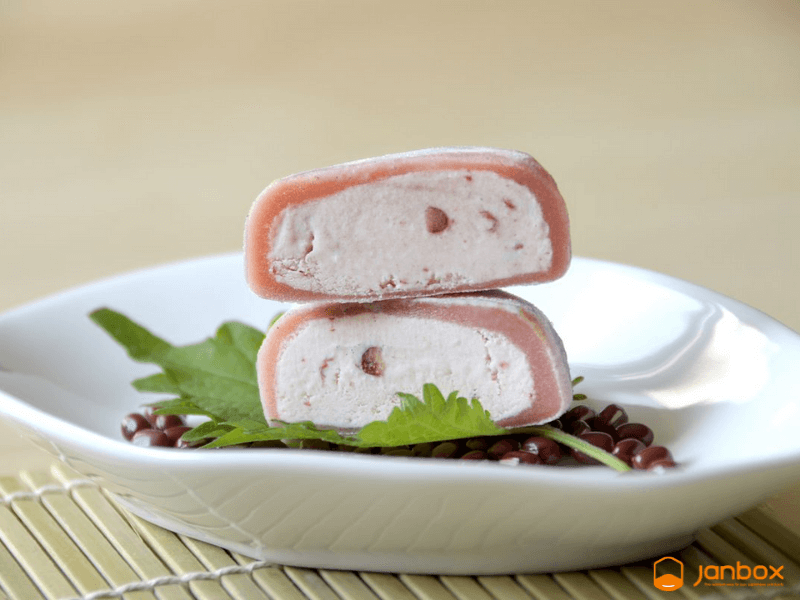
Mochi Ice Cream is a more contemporary form of mochi. A strong Japanese delicacy has been created by combining the chewy, silky, sweet texture of mochi and ice cream with a variety of unique tastes such as chocolate vanilla, strawberry, mango, coffee, green tea, and lychee. This meal is well-known around the world and may be found in many countries.
2.12. Sakura Mochi
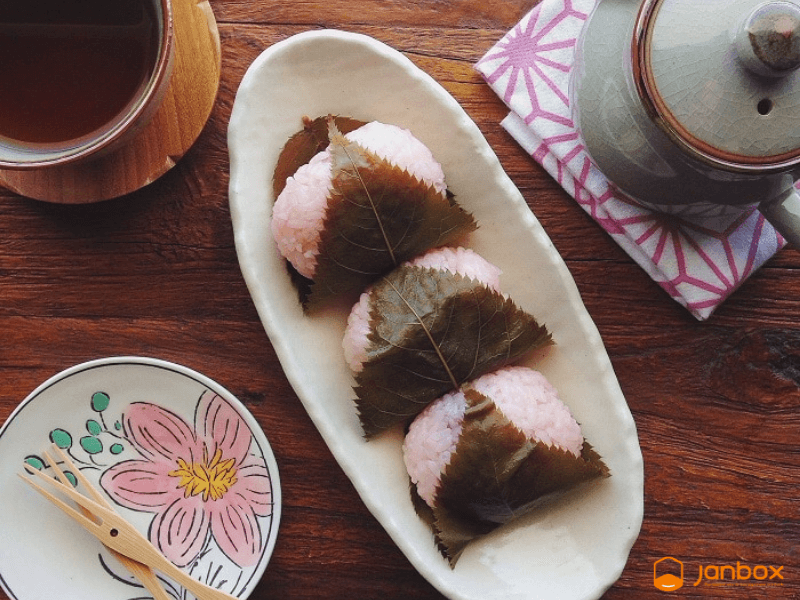
A cherry blossom leaf is wrapped around the exterior of the cake to give it a distinct fragrance. This type of Mochi is light pink in hue, with azuki red bean paste pureed in the center. The cherry blossom leaves have been salted and the cake has been wrapped so that you can completely appreciate the flavor of the leaves and cake. Sakura Mochi is popular in the spring, particularly during the Hinamatsuri celebration, or “girls’ day.”
2.13. Warabi Mochi
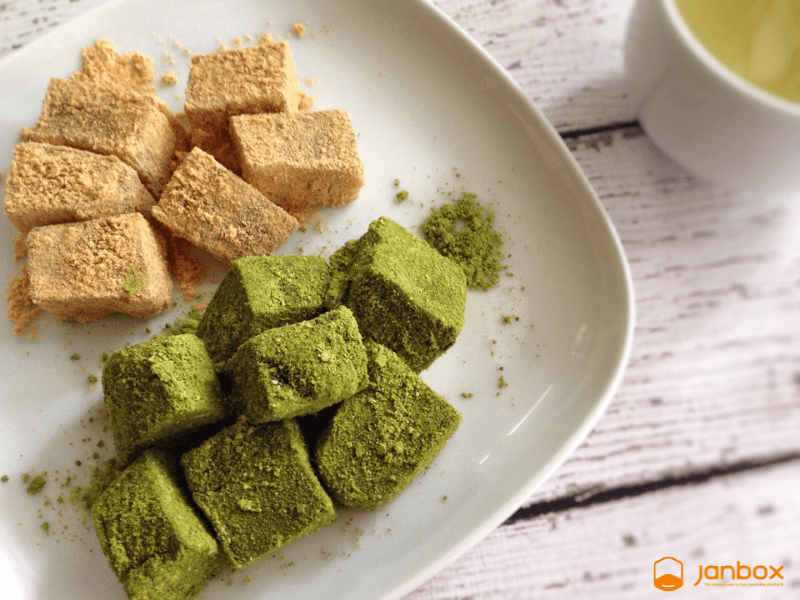
This cake has a thick and soft texture, thus it is classified as a form of mochi, but the contents are different. Traditional mochi is made from sticky rice flour while this one is created with turmeric starch (Warabiko). As a result, it has a jelly-like consistency. It is frequently rolled in Kinako soybean paste and served with Kuromitsu (black sugar syrup). This style of cake is associated with the summer season because it provides the consumer with a refreshing and delectable sensation.
2.14. Yaki Mochi
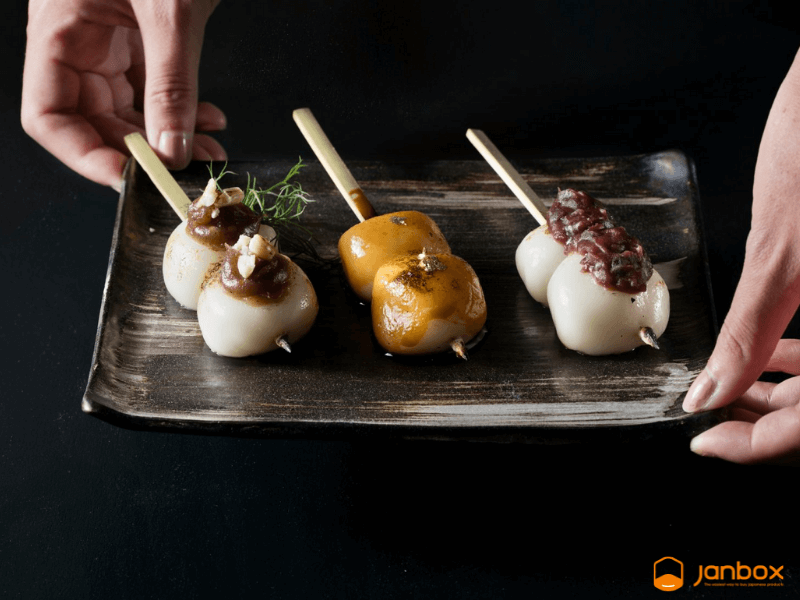
Because it is created around the New Year and Dondo festivals, this cake gets a lot of attention from youngsters. These Yaki Mochi cakes will be cooked on fire after being impaled on a long bamboo stick. The Yaki Mochi will be soft and aromatic once it has been cooked. Yaki mochi is a Japanese word that means “good health for a year.”
2.15. Yatsuhashi
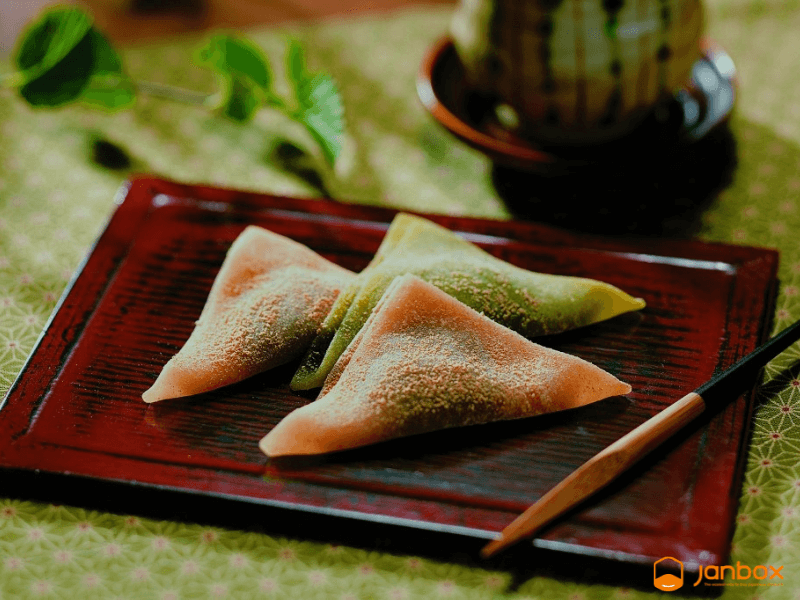
These triangular mochi cakes are a Kyoto specialty. Baked or raw, they can be filled with a variety of fillings between thin layers of mochi, but cinnamon is the most common. Yatsuhashi is available in two forms: baked, crunchy cracker-like Yatsuhashi, and “Nama Yatsuhashi” or “Raw Yatsuhashi,” which possesses the softness and chewiness of Mochi. Sweet red bean paste, black sesame filling, white peach jam, and other fillings are presented in beautiful triangular bags.
3. What is Mochi made of?

We can say that rice is the main component of Mochi, but not just any rice, but Mochigome, Japanese glutinous rice with gluten-free. It’s also known as Japanese sticky rice or sweet rice informally. This rice grain has a somewhat sweet flavor and is shorter, rounder, and opaque. The chemical makeup of this rice is the key to Mochi’s distinctive consistency, suppleness, and elasticity. Amylose and Amylopectin are the two major starch components of rice.
Would you believe it if someone told you that water and air are also used to make Mochi? These are, in reality, required components in the preparation of Mochi. The stickiness of rice grains is mostly determined by water. Steamed rice is pounded numerous times using heavy wooden instruments in the process of creating Mochi, and water is frequently added to the dough to keep it from sticking to the pounding device and drying out. This continuous pounding procedure also introduces air bubbles into the dough, resulting in a soft and flexible texture, which is essential for a true Mochi.
Traditional mochi is made up of two layers: sticky rice on the outside and red bean paste on the inside. However, today with current technology, mochi has been enhanced by adding an innermost layer of ice cream to give a unique sensation when eating it.
4. How is Mochi made?
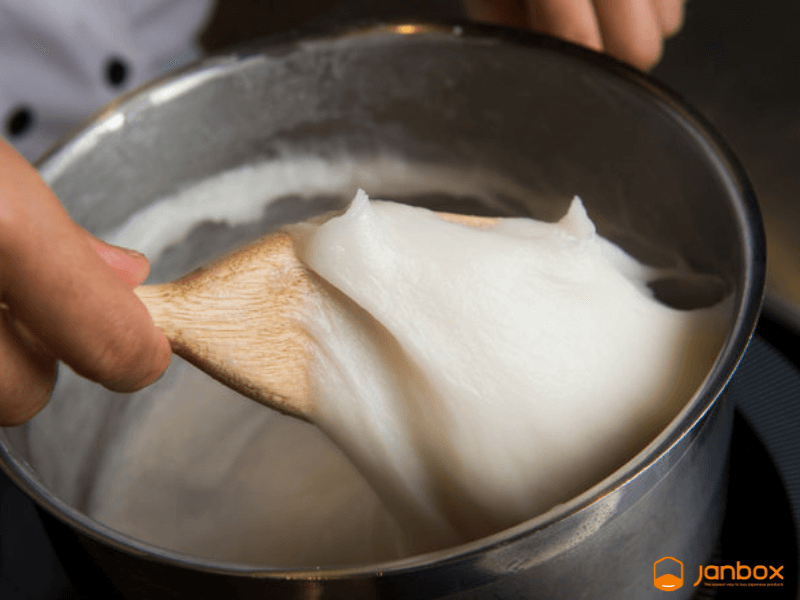
Mochi may be made in two ways. It starts with steamed sticky rice, which is then pounded and shaped. Another method is to dry sticky rice into mochi flour (also known as Mochiko/sweet rice flour) and then add water to steam it, resulting in Mochi.
However, one thing to bear in mind while preparing mochi is that the rice must be well washed and soaked for at least 6 to 8 hours before use. Additionally, the pounding process should last at least 10 – 15 minutes to convert all of the rice grains into a hugely flexible and tasty mass with the proper consistency and texture.
Mochi must be created by hand by well-known and long-standing Japanese Mochi makers. This new cake is chock-full of the country’s and people’s most iconic elements. That is evident in everything from the flavor to the ingredients to the distinct and one-of-a-kind design. The technique of crushing rice to produce Mochi cakes is very unique. Steamed glutinous rice will be used by the craftsmen at this point.
The mixture will then be placed in a mortar and crushed with a pestle by hand to get a smooth consistency. This step appears to be straightforward, but it is actually rather tough and hazardous. When the rice is placed in the mortar to be pounded, two persons will hold the pestle and pound it constantly at a high speed. Another person will be in charge of keeping the dough in the mortar constantly stirred. This rhythmic synchronization is achieved by having two individuals pound the rice at the same time, ensuring that the flour is pounded uniformly and smoothly.
5. How to try Japanese mochi?
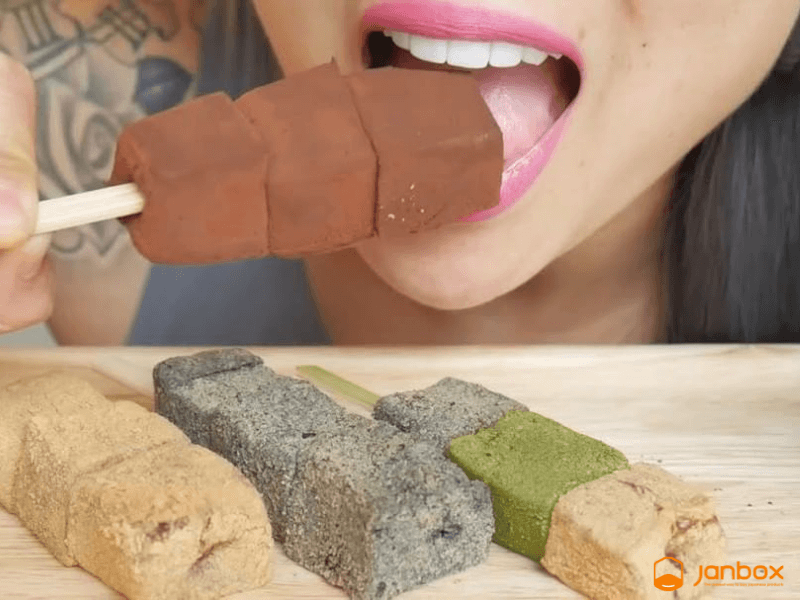
We can see that Mochi is widely available, and you can even make your own at home, making it simple to sample Japanese Mochi. There are several tastes and types from which to select. You may eat it immediately or cut it into little pieces and enjoy it with a cup of hot tea to get the most out of your relaxation time. We may mix Mochi with a variety of sauces, including soy sauce, Anko sauce, black sesame sauce, etc… depending on the type of Mochi. There are several varieties of Mochi that must be cooked or grilled before eating in order to fully appreciate their flavor.
6. Where can I buy mochi?

Nowadays, finding a shop that offers mochi is quite simple. Mochi, in its many forms, is offered not just in Japan but also in other countries in supermarkets, grocery shops, and even on e-commerce platforms. Mochi is also available online.
Conclusion
Did you like the article? I hope you find it useful that you now know everything there is to know about Mochi, including what Mochi is, how to create Mochi cakes, the many varieties of Mochi, and their significance. We believe that this will serve as a resource for you as you learn more about this traditional Japanese rice cake. Please contact Janbox if you know anything about Mochi or if you have any queries!
If you are interested, please click on the image below to understand more about how Janbox can help you buy products directly from Japan and have them shipped to your front door regardless of where you are.

